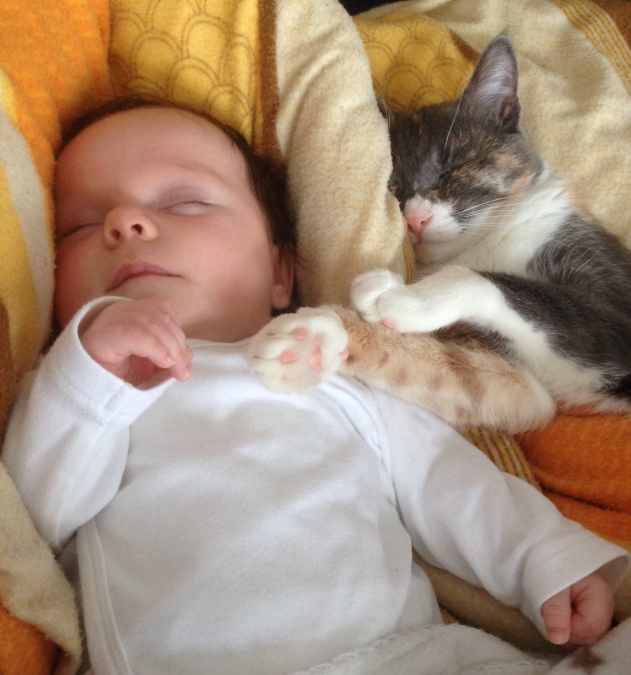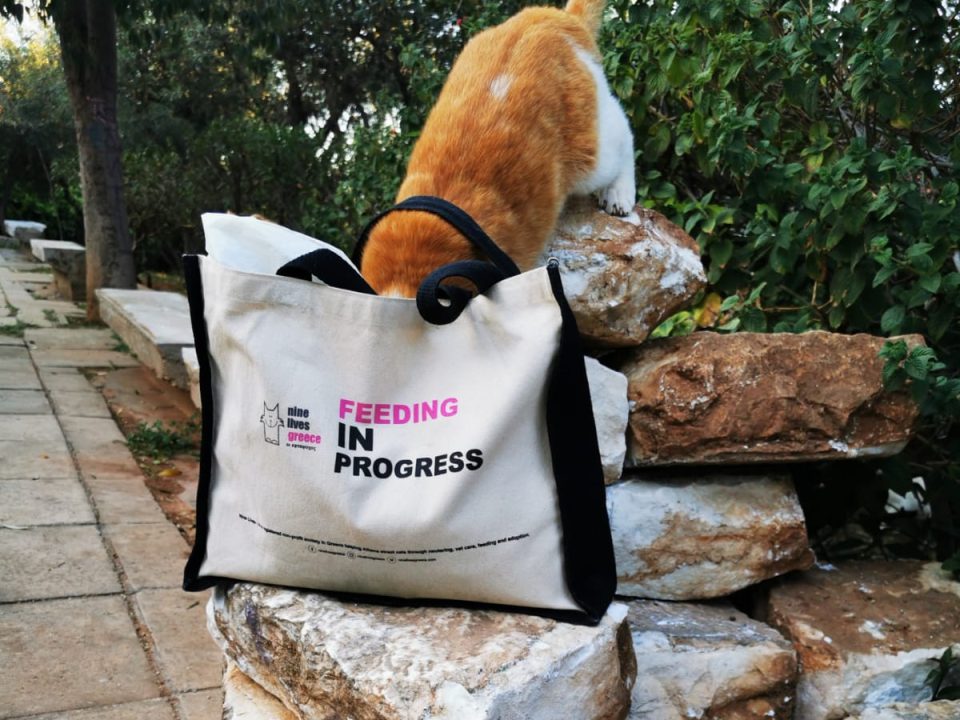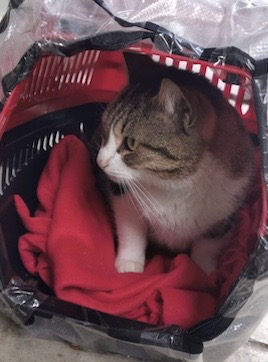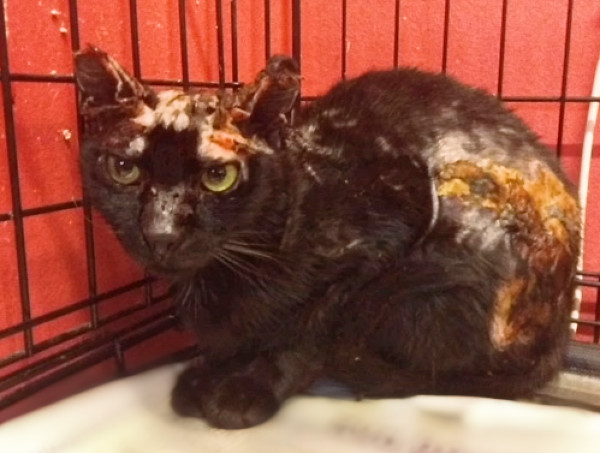
Attica Fires: One cat’s story of survival
August 15, 2018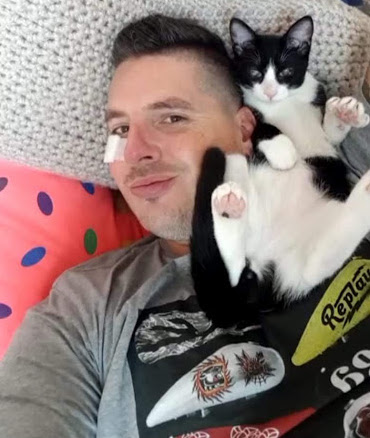
When a holiday turns into a rescue mission
October 16, 2018The following post was written by Dr Marialena Kyriakakou, a pediatrician who specializes in children’s allergies and believes that cats and children can live together safely.
A frequent topic of concern for parents is adopting a cat as a pet. On the one hand children want a friend. On the other there are so many untrue common myths about cats and children living together that parents become fearful and hesitant.
The first thing that needs to be clarified is that children are not in any danger of cats (even stray cats) unless the cats are infected and the children touch the cats’ feces with their bare hands and then put them in their mouth.
One reason that parents fear allowing cats and kids to live together in the home is the supposed risks from parasites, such as toxoplasma, that cats allegedly carry. Toxoplasmosis is caused by the protozoan parasite Toxoplasma gondii. Within the human body the parasite’s cysts are created, inside which the parasite survives throughout the life of the individual.
In general, toxoplasmosis usually does not have much to do with domestic cats and kids. But it is particularly dangerous for pregnant women since it can lead to abortion in the second or third month of pregnancy or cause severe genetic defects in fetal tissues. However, with proper precautions, even a pregnant woman is not in danger of being infected if basic hygiene rules are followed, caution is given to cat food and their litter box is cleaned every 2 days.
The risk of infection for a pregnant woman is quite small and only under certain conditions can she be exposed, such as: cleaning the cat’s litter box and touching the cat’s feces with bare hands that have open wounds on the skin, provided of course that the cat is infected. There is no reason to be concerned about domestic cats when a few proper precautions are taken. Under no circumstances is it necessary to remove cats from the home during pregnancy.
If these safety measures are not followed, if toxoplasmosis is diagnosed early and appropriate treatment is administered, the probability of fetal infection is significantly reduced. Toxoplasmosis has flu-like symptoms that wear off within a few weeks. The medication may include pyrimethamine, sulfadiazine, folinic acid and is effective only during the acute phase of the disease or during its resurgence.
It’s very interesting to note how toxoplasmosis is spread. Cats are not its original source. The main way toxoplasmosis is transmitted to humans is through consumption of toxoplasm cysts, by eating raw or half-grilled meat, such as ready-to-eat meals like souvlaki, gyro, etc.
In addition, a person may get toxoplasmosis through consumption of mature toxoplasm oocysts, by eating unwashed or poorly washed fruits, vegetables, greens etc., if infected rodents scrambled over them before they were harvested. Also, toxoplasma merozoites found in the blood of a pregnant woman and breast milk of a nursing mother could be transmitted and infect the fetus or the newborn, respectively.
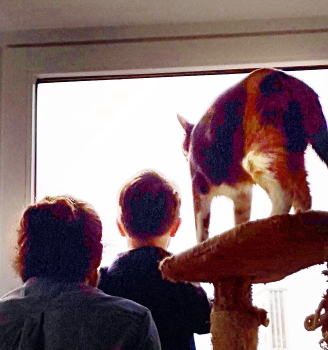 Though they do not normally carry this parasite, the parasite can complete its life cycle in the intestinal systems of cats and other felines. If a cat consumes raw meat, such as a mouse for example, it can be infected and then spread toxoplasm’s immature oocysts with its feces in the environment within 2-20 days.
Though they do not normally carry this parasite, the parasite can complete its life cycle in the intestinal systems of cats and other felines. If a cat consumes raw meat, such as a mouse for example, it can be infected and then spread toxoplasm’s immature oocysts with its feces in the environment within 2-20 days.
Depending on the temperature and humidity of the environment, immature oocysts will mature within 2-4 days of defecation, so no one can be infected with fresh feline feces. It is critical, however, to clarify one thing: only toxoplasm’s mature oocysts can infect a living organism; not immature ones.
Cats and kids can live together safely. It is rare for a child to become infected by toxoplasmosis: domestic cats are unlikely to be infected with toxoplasma, since they consume dry food rather than raw meat such as mice. However, whether there is a cat in your home or not, strict personal hygiene measures must be followed to avoid the risk of infection. It is advisable to consume well-cooked meat and, as with other infections, the benches and kitchenware used to handle raw meat should be thoroughly cleaned and washed.
Fruits and vegetables should be adequately washed and the milk consumed should be boiled or pasteurized. A cat’s litter box should be cleaned every 1-2 days using gloves instead of bare hands if the cat is allowed outside, because then no one can know what it may have consumed.
For cats that live exclusively in the house and consume dry food or special canned food, there is no risk of toxoplasma infection. Any meat that is included in its diet should be boiled or frozen. Children playing with cats can be entertaining for all involved and and can bring many moments of laughter and joy. In the end, however, children should wash their hands with water and soap, and it is essential that cats are taken to the vet regularly and the necessary vaccination program is strictly adhered to.
It has been shown through scientific studies that contact with animals is beneficial to the child’s development, both mentally and physically. Presence of a pet helps strengthen the child’s immune system, reducing the likelihood of allergy and asthma, and also offers a good opportunity for exercise which can help fend off childhood obesity.
As long as proper hygiene measures are followed a cat is an excellent choice for a pet. Growing up with a cat in the house can limit a child’s sense of insecurity, give the child a true friend, as cats and kids can develop emotional ties and teach the child about social liability and responsibility. Proper information from your pediatrician will help you understand any and all possible dangers and advise you of the proper protective measures so that the whole family can enjoy life with a cat.


